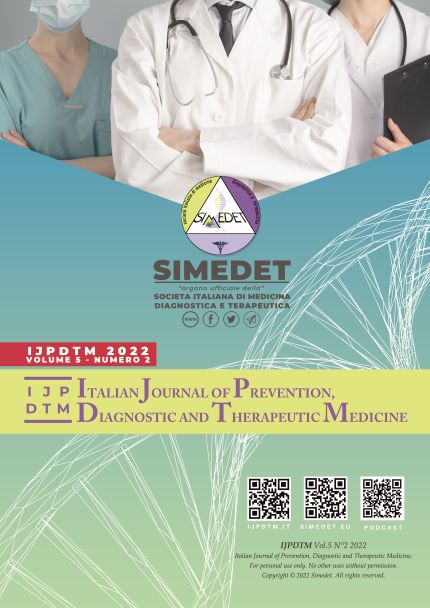Barometric and Hyperoxia Effects During Artificial Membrane Lung
Main Article Content
Abstract
ABSTRACT
Oxygen is one of the most commonly used therapeutic agents.
Injudicious use of oxygen at high partial pressures (hyperoxia) for unproven indications, its known toxic potential, and the acknowledged roles of reactive oxygen species in tissue injury led to skepticism regarding its use. Nevertheless, a large body of data indicates that hyperoxia exerts an extensive profile of physiologic and pharmacologic effects that improve tissue oxygenation, exert anti-inflammatory and antibacterial effects, and augment tissue repair mechanisms.
These data set the rationale for the use of hyperoxia in a list of clinical conditions characterized by tissue hypoxia, infection, and consequential impaired tissue repair. In the world of Perfusion both Cardiopulmonary Bypass (CPB) both Extracorporeal Membrane Oxygenation (ECMO) the application and use of hypobaric or hyperbaric oxygenation and oxygen at high partial pressures (hyperoxia) during artificial membrane lung (aML) is a controversial topic. Gaseous microemboli (GME) may originate from the extracorporeal circuit and enter the arterial circulation of the patient. GME are thought to contribute to cerebral deficit and to adverse outcome after cardiac surgery.
The arterial filter is a specially designed component for removing both gaseous and solid micro-emboli. In different study hypobaric oxygenation approach capitalizes gaseous micro-embolism (GME) reduction to achieve their near-total elimination during cardiopulmonary bypass (CPB). This review summarizes the pros and cons on hyperbaric or hypobaric oxygenation management and hyperoxia during extracorporeal technologies that used membrane lung oxygenators.
Downloads
Article Details

This work is licensed under a Creative Commons Attribution-NonCommercial-NoDerivatives 4.0 International License.
References
Bitterman H. Bench-to-bedside review: oxygen as a drug. Crit Care. 2009; 13 (1): 205. doi: 10.1186 / cc7151.
Hendrix RHJ, Ganushchak YM, Weerwind PW. Contemporary Oxygenator Design: Shear Stress-Related Oxygen and Carbon Dioxide Transfer. Artif Organs. 2018 Jun;42(6):611-619. doi: 10.1111/aor.13084.
Gipson KE, Rosinski DJ, Schonberger RB, Kubera C, Mathew ES, Nichols F, Dyckman W, Courtin F, Sherburne B, Bordey AF, Gross JB. Elimination of gaseous microemboli from cardiopulmonary bypass using hypobaric oxygenation. Ann Thorac Surg. 2014 Mar; 97 (3): 879- 86. doi: 10.1016 / j.athoracsur.2013.08.074. Epub 2013 Nov 6. PMID: 24206970; PMCID: PMC4294693.
Alex J, Laden G, Cale AR, Bennett S, Flowers K, Madden L, Gardiner E, McCollum PT, Griffin SC. Pretreatment with hyperbaric oxygen and its effect on neuropsychometric dysfunction and systemic inflammatory response after cardiopulmonary bypass: a prospective randomized double-blind trial. J Thorac Cardiovasc Surg. 2005 Dec; 130 (6): 1623-30. doi: 10.1016 / j.jtcvs.2005.08.018.
Tibbles PM, Edelsberg JS: Hyperbaric-oxygen therapy. N Engl J Med. 1996, 334: 1642-1648.
Borema I, Meyne NG, Brummelkamp WK, Bouma S, Mensch MH, Kamermans F, Stern Hanf M, van Aalderen W: Life without blood. Ned Tijdschr Geneeskd. 1960, 104: 949-954.
Weaver LK, Jopkins RO, Chan KJ, Churchill S, Elliot CG, Clemmer TP, Orme JF, Thomas FO, Morris AH: Hyperbaric oxygen for acute carbon monoxide poisoning. N Engl J Med. 2002, 347: 1057-1067.
Weibel ER: Delivering oxygen to the cells. The Pathway for Oxygen. Edited by: Weibel ER. 1984, Boston: Harvard University Press, 175-210.
Rivers EP, Ander DS, Powell D: Early goal-directed therapy in the treatment of severe sepsis and septic shock. N Engl J Med. 2001, 345: 1368-1377.
Suttner S, Piper SN, Kumle B, Lang K, Rohn KD, Isgro F, Boldt J: The influence of allogeneic red blood cell transfusion compared with 100% oxygen ventilation on systemic oxygen transport and skeletal muscle oxygen tension after cardiac surgery. Anesth Analg. 2004, 99: 2-11.
Lambertsen CJ: Effects of oxygen at high partial pressure. Handbook of Physiology: Respiration. Section 3. Edited by: Fenn WO, Rahn H. 1965, Bethesda, MD: American Physiological Society, 2: 1027- 1046.
Bouachour G, Cronier P, Gouello, Toulemonde JL, Talha A, Alquier P: Hyperbaric oxygen therapy in the management of crush injuries: a randomized double blind placebo-controlled clinical trial. J Trauma. 1996, 41: 333-339.
Sukoff MH, Ragatz RE: Hyperbaric oxygenation for the treatment of acute cerebral edema. Neurosurgery. 1982, 10: 29-38.
Nemoto EM, Betterman K: Basic physiology of hyperbaric oxygen in brain. Neurol Res. 2007, 29: 116-126.
Daugherty WP, Levasseur JE, Sun D, Rockswold GL, Bullock R: Effect of hyperbaric oxygen therapy on cerebral oxygenation and mitochondrial function following moderate lateral fluid-percussion injury in rat. J Neurosurg. 2004, 101: 499-504.
Rockswold SB, Rockswold GL, Defillo A: Hyperbaric oxygen in traumatic brain injury. Neurol Res. 2007, 29: 162-172.
Tolias CM, Reinert M, Seiler R, Gilman C, Scharf A, Bullock MR: Normobaric hyperoxia-induced improvement in cerebral metabolism and reduction in intracranial pressure in patients with severe brain injury. J Neurosurg. 2004, 101: 435-444.
Anderson DC, Bottini AG, Jagiella WM, Westphal B, Ford S, Rockswold GL, Loewenson RB: A pilot study of hyperbaric oxygen in the treatment of human stroke. Stroke. 1991, 22: 1137-1142.
Nighoghossian N, Trouillas P, Adeleine P, Salord E: Hyperbaric oxygen in the treatment of acute ischemic stroke. A double blind pilot study. Stroke. 1995, 26: 1369-1372.

